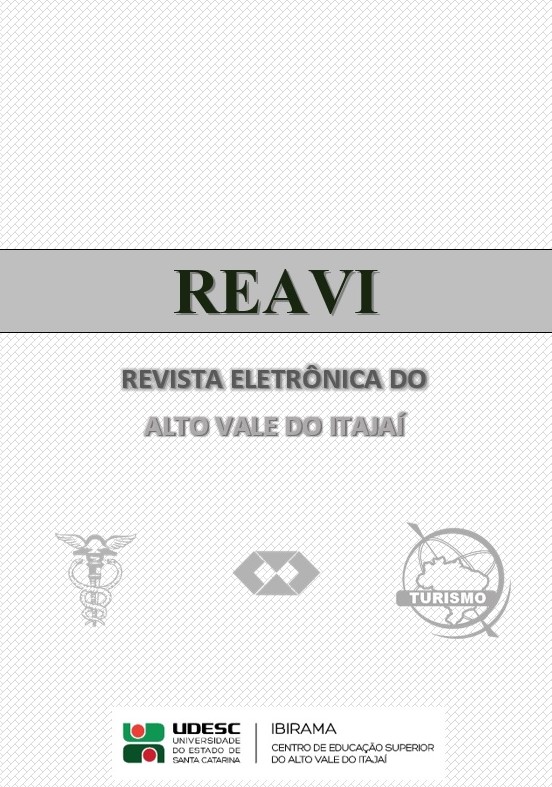Un análisis sobre el papel del gobierno chino en los parques científicos y tecnológicos (zonas de alta tecnología) en China
DOI:
https://doi.org/10.5965/2316419008112019084Palabras clave:
Porcelana, Parques, Política, Gobierno, InnovaciónResumen
China es un país que ha crecido rápidamente en las últimas décadas y su realidad aún es poco conocida en el Occidente. De esta manera, la forma de actuar de los gobiernos en este crecimiento orientado a la ciencia, la tecnología y la innovación merece la atención, principalmente, de los países emergentes. Por lo tanto, el presente estudio tiene como objetivo analizar el papel del gobierno en los parques científicos y tecnológicos chinos. Para ello, se realizó una revisión de la literatura en la base de datos Scopus. A partir del protocolo de selección, se filtraron 12 artículos que sirvieron de base para nuestro análisis. Los resultados demuestran que el gobierno chino ejerce una fuerte influencia sobre el desarrollo de los parques en el país. Ya que, a partir de la década de los 80, impulsó fuertemente las políticas de creación de parques tecnológicos, principalmente a través del programa Torch. Actualmente, esta política orientada a la innovación es estudiada por varios autores que buscan una mejor comprensión del sistema de innovación chino.
Descargas
Citas
ANPROTEC.Parques Tecnológicos Consolidados.2019. Disponível em: <http://anprotec.org.br/site/lideres-tematicos/parques-consolidados>. Acesso em: 05 nov. 2019.
CCP. THE 13TH FIVE-YEAR PLAN FOR ECONOMIC ANDSOCIAL DEVELOPMENT OF THE PEOPLE’S REPUBLIC OF CHINA, (2016–2020). 2016. Disponível em: <http://www.gov.cn/xinwen/2016-03/17/content_5054992.htm>. Acesso em: 29 jul. 2019.
CHEN, Chuchu; LINK, Albert N. Employment in China’s hi-tech zones.International Entrepreneurship and Management Journal,p. 697-703, 2018. http://dx.doi.org/10.1007/s11365-017-0486-z
CHENG, Fangfang; VAN OORT, Frank G.; GEERTMAN, Stan; HOOIMEIJER, Pieter. Science Parks and the Co-location of High-tech Small-and Medium-sized Firms in China’s Shenzhen.Urban Studies.S.I., p. 1073-1089, 2013. https://doi.org/10.1177/0042098013493020
CTP. National-level independent innovation demonstration zone list. 2018. Disponível em: <http://www.ctp.gov.cn/gxq/zzcx/201803/e83727ff76ea44fdaa26a4eb2b288dd5.shtml>. Acesso em: 27 jul. 2019.
GAO, Xiaopei; SONG, Wei; PENG, Xiaobao. National Innovation Demonstration Zones Leading China's Regional Development. Modern Economy, p. 1056-1063, 2015.
GUO, Yu; VERDINI, Giulio. The role of geographical proximity in the establishment and development of science parks –evidence from Nanjing, China.Asian Geographer,S.I., p. 117-133, 2015. https://doi.org/10.1080/10225706.2015.1079726
HAOUR, Georges; JOLLY, Dominique. China: the next innovation hot spot for the world.Journal of Business Strategy,p. 2-8, 2014. https://doi.org/10.1108/JBS-05-2013-0037
HOBBS, Kelsi G.; LINK, Albert N.; SCOTT, John T.. Science and technology parks: an annotated and analytical literature review.The Journal of Technology Transfer,p. 957-976, 2017. https://doi.org/10.1007/s10961-016-9522-3I
ASP. Definitions. Disponível em: <https://www.iasp.ws/our-industry/definitions>. Acesso em: 06 nov. 2019.
JONGWANICH, Juthathip; KOHPAIBOON, Archanun; YANG, Chih-hai. Science park, triple helix, and regional innovative capacity: province-level evidence from China. Journal of the Asia Pacific Economy.S.I., p. 333-352, 2014. https://doi.org/10.1080/13547860.2014.880285
KOSTER, Hans RA; CHENG, FangFang; GERRITSE, Michiel; VAN OORT, Frank G.. Place‐based policies, firm productivity, and displacement effects: Evidence from Shenzhen, China.Journal of Regional Science, v. 59, n. 2, p. 187-213, 2018.https://doi.org/10.1111/jors.12415
LIU, Yipeng; WOYWODE, Michael; XING, Yijun. High technology start-up innovation and the role of guanxi: an explorative study in China from an institutional perspective.Prometheus,p. 211-229, 2012. https://doi.org/10.1080/08109028.2012.661558
MARCONI, Marina de Andrade; LAKATOS, Eva Maria.Metodologia Científica.7. ed. S.i: Atlas, 2017. 390 p.
MIAO, Julie Tian; HALL, Peter. Optical illusion? The growth and development of the Optics Valley of China.Environment and PlanningC: Government and Policy, v. 32, n. 5, p. 863-879, 2014.http://dx.doi.org/10.1068/c1270r
MOTOHASHI, Kazuyuki. The role of the science park in innovation performance of start-up firms: an empirical analysis of Tsinghua Science Park in Beijing.Asia Pacific Business Review, v. 19, n. 4, p. 578-599, 2013. https://doi.org/10.1080/13602381.2012.673841
UKSPA (United Kingdom). About UKSPA. Disponível em: <http://www.ukspa.org.uk/ourassociation/about-us>. Acesso em: 06 nov. 2019.
XIE, Kefan et al. Technological entrepreneurship in science parks: A case study of Wuhan Donghu High-Tech Zone.Technological Forecasting and Social Change.S.i., p. 135-156. 01 out. 2018. http://dx.doi.org/10.1016/j.techfore.2018.01.021
YANG, Chih-hai; LEE, Chia-min; LIN, Chun-hung A..Why does regional innovative capability vary so substantially in China? The role of regional innovation systems.Asian Journal of Technology Innovation,p. 239-255, 2012.
ZOU, Yonghua; ZHAO, Wanxia. Anatomy of Tsinghua University Science Park in China: institutional evolution and assessment.The Journal of Technology Transfer.S.I., p. 663-674, 2014. https://doi.org/10.1007/s10961-013-9314-y
Descargas
Publicado
Cómo citar
Número
Sección
Licencia
Derechos de autor 2019 REAVI - Revista Eletrônica do Alto Vale do Itajaí

Esta obra está bajo una licencia internacional Creative Commons Atribución 4.0.




















